Knee pain is a very annoying nuisance that is unfortunately experienced by most people. They can be sharp, painful, burning, tingling, restricted joint movement, present only during physical activity or even at rest. But many, instead of going to the doctor, try to eliminate them with the help of painkillers, namely ointments, gels or tablets of nonsteroidal anti-inflammatory drugs. Such drugs, although they have anti-inflammatory properties, can not affect the pathogenesis of knee pain and, therefore, only temporarily help to eliminate them. Therefore they can only be considered as a means of symptomatic therapy.
But the causes of discomfort in the knee joints can be the occurrence of various disorders, both directly on the knee and in the spine or other parts of the body. Therefore, it is possible to develop an effective treatment strategy that will really help to eliminate the pain only after determining the exact cause of their appearance. For this you will need to go through a series of diagnostic procedures and get expert advice, but only in this way you can really improve your well-being and prevent the development of complications.
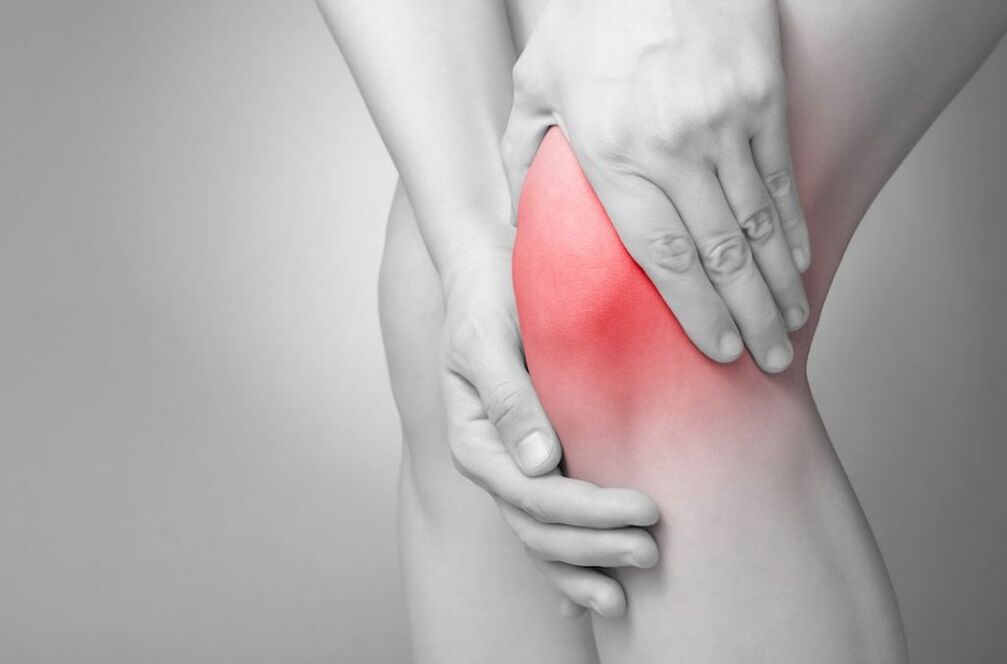
ᲛReasons
Knee pain can be accompanied by a variety of diseases, from arthrosis of the knee joints to pathologies of the lumbar, sacral spine and pelvic bones. Also, the causes of discomfort in the knees or even severe pain can be chondropathy, arthritis, neuritis and other similar diseases.
The obvious cause of the development of pain syndrome is a variety of injuries ranging from bruises, dislocations, ruptured ligaments, meniscus damage or intra-articular fractures. But in such situations the pain is almost always acute and is manifested by impact, falling or other traumatic factors. Therefore, in such cases, victims need to contact a traumatologist to treat the consequences of the injury.
Thus, knee pain is always a sign of an abnormal process that damages the cartilage, bone or soft tissue structures of the knee itself, or the nerve that innervates it. Consider the main reasons for their appearance.
Arthrosis or gonarthrosis of the knee joints
Osteoarthritis, Knee Osteoarthritis or Gonarthrosis is one of the most common causes of knee pain. This disease is characterized by the emergence of degenerative-dystrophic processes in the cartilaginous structures of the joint, which is caused by disruption of the flow of metabolic processes, the action of traumatic factors in the past, and so on. Sh. Gonarthrosis occurs very often. Diagnosed in the middle-aged and elderly, athletes and people engaged in heavy physical labor.
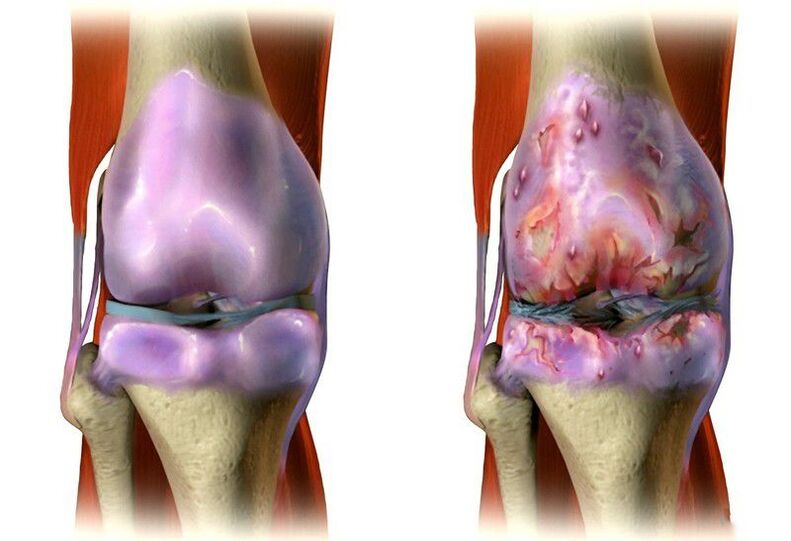
This disease has a chronic course, progresses slowly, and eventually causes severe limitation of joint movement, impaired limb support function (often both), and pain. At first they are sluggish, painful, attractive in nature and occur during movement accompanied by knee cramps, especially when climbing stairs. But in the absence of treatment, the cartilage of the knee joints continues to wear out gradually, causing the pain to intensify and its presence even at rest. Subsequent destruction of the articular surfaces occurs, which further aggravates the situation and can even lead to disability.
A typical feature of osteoarthritis of the knee joints is the presence of initial pain, which patients need to "disassemble" to eliminate. Thanks to this, improvement is observed in 15-30 minutes.
Gonarthrosis is often complicated by the addition of inflammatory processes that can affect the synovial sac, ligaments, and tendons. This causes a sharp increase in pain, an acquired explosive character, swelling of the soft tissues, and a local increase in temperature.
Diseases of the spine and asymmetry of the pelvic bones as causes of knee pain
At first glance, there is no connection between the lumbar spine and the knees. But in reality this is not the case. They are closely related to the sciatic nerve (nervus ischiadicus), which is the main nerve of the foot. It arises in the spine and arises simultaneously with the natural openings of the vertebrae of the nerves with fibers coming out of the spinal cord:
- L4;
- L5;
- S1;
- S2;
- S3.
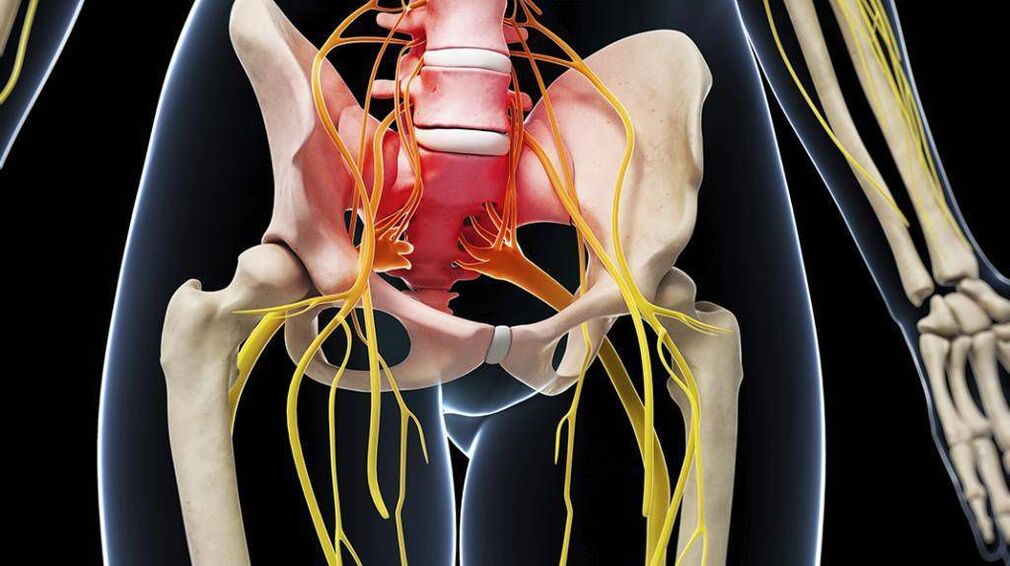
These nerves run through the vertebrae of the same name and unite at the sacral level in the nerve plexus. From it the sciatic nerve emerges along the spine of each leg and innervates the knee. At the same time, this nerve is responsible for its sensory (motor) and motor (motor) functions. Therefore, a violation at any point of its passage, especially in the lumbar region, can lead to pain in the knee. Most often it is associated with development:
- Osteochondrosis, protrusion and intervertebral hernia. These diseases are based on degenerative-dystrophic changes in the intervertebral discs located between almost all vertebrates. They are characterized by a systematic decrease in the height of the disk and its dehydration, which leads to a decrease in the elasticity of its structures and an increase in the risk of their breaking under load. As a result, the vertebrae get closer to each other, which can lead to compression of the nerve roots coming out of them. If such changes occur in the lumbar region, it is possible to compress the fibers that form the sciatic nerve and, consequently, the appearance of pain in the knee. But more often this symptom occurs already when osteochondrosis is complicated by the formation of protrusion (protrusion) of the intervertebral disc or the formation of its hernia (rupture of the outer membrane of the disc), because the affected areas can strongly compress the spinal roots directly in the back. Spinal canal and causes severe neurological complications, including pain in the knee.
- Spondylosis. It is a disease that most often develops on the background of osteochondrosis and is chronic. It is accompanied by excessive growth of the surfaces of the vertebral bodies in the vicinity of the intervertebral discs and the formation of bone growths (osteophytes) on them. In severe cases, neighboring vertebrates can grow together, causing them to become immobilized and the nerves in them to tighten.
- Spondylolisthesis. This term refers to a pathology of the spine in which the overlapping spine is displaced toward the lower spine. Most often, it is the lumbar region that is affected, leading to disruption of the sciatic nerve forming nerves.
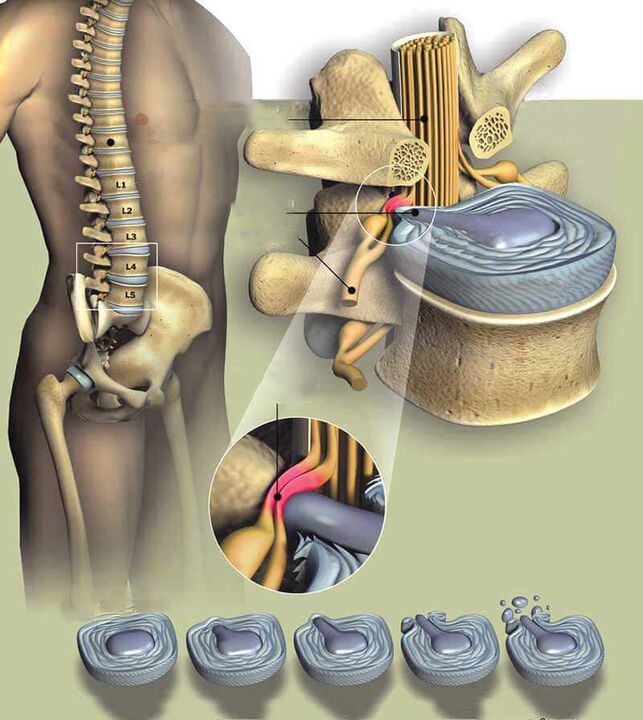
Signs that may lead to suspicion of developing knee pain due to lumbar spine pathologies may additionally include:
- Stretching, aching, sharp pains in the lumbar region;
- Muscle tension, femoral bones, quadriceps that occupy the entire anterior surface of the thigh and partially the outer side;
- Pain and stiffness in the thighs;
- Diffuse pain in the legs;
- Pain in the upper thigh.
In each case, the set of symptoms, nature and severity will be different. It largely depends on the individual characteristics of the organism and the degree of nerve compression.
Direct sciatic nerve damage may indicate (symptoms may be seen in only one limb or in both at the same time):
- Pain in the knees, hips and waist;
- Spasm of the muscles of the back and legs;
- Burning on the back of the foot;
- Loss of control over bladder and bowel functions.
When the sciatic nerve malfunctions, there is often a feeling of instability in the knees, their contraction. As a result, the patient complains that he can not fully rely on his legs.
Asymmetry of the sacrum and pelvis can also cause pain in the knee joint. It arises as a result of a difference in the length of the lower extremities, which may be caused by congenital features or curvature of the pelvis, including on the background of scoliosis. This causes overload of one of the legs and rapid wear of the cartilage of the knee joint, leading to osteoarthritis.
The abdominal muscles attached to the pelvic bone are responsible for ensuring the stability of the pelvic bones. When they are weakened as a result of excess weight, sedentary lifestyle or other factors, the back muscles of the thigh are overloaded. This in turn causes the knee joint to overload.
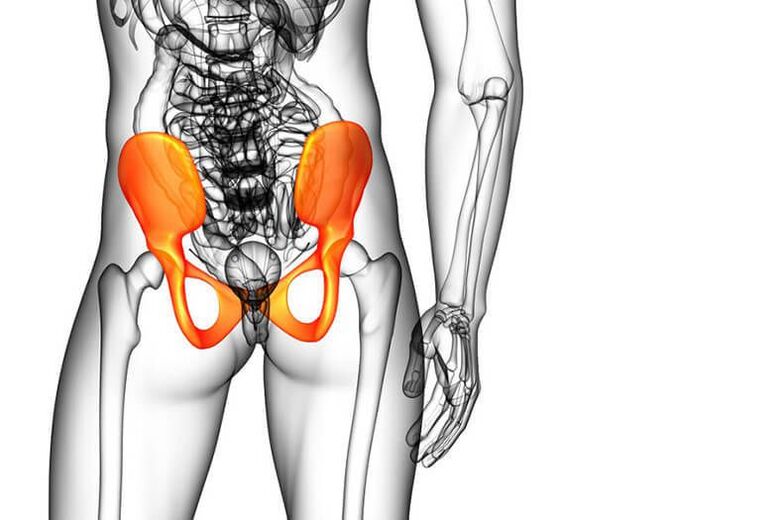
Foot and ankle pathologies
Ankle joints, like the knee, can be affected by osteoarthritis. It is often diagnosed in athletes, especially ballet dancers, gymnasts, as well as the elderly. This leads to disruption of the biomechanics of movements, which increases the load on the knee joint and promotes its rapid wear. In such situations a person will suffer not only from knee but also ankle pain, which due to limited movements is significantly reflected during walking.
Foot pathologies, particularly flatfoot and hallux valgus, can also provoke increased strain on the knees and cause pain in them. These orthopedic pathologies are very common today and in most cases develop in childhood and worsen in adulthood. Valgus deformity is characterized by a violation of the axis of the ankle joint as a result of falling inside the foot. This is associated with increased fatigue of the legs, pain in them, but can subsequently cause pain in the knees.
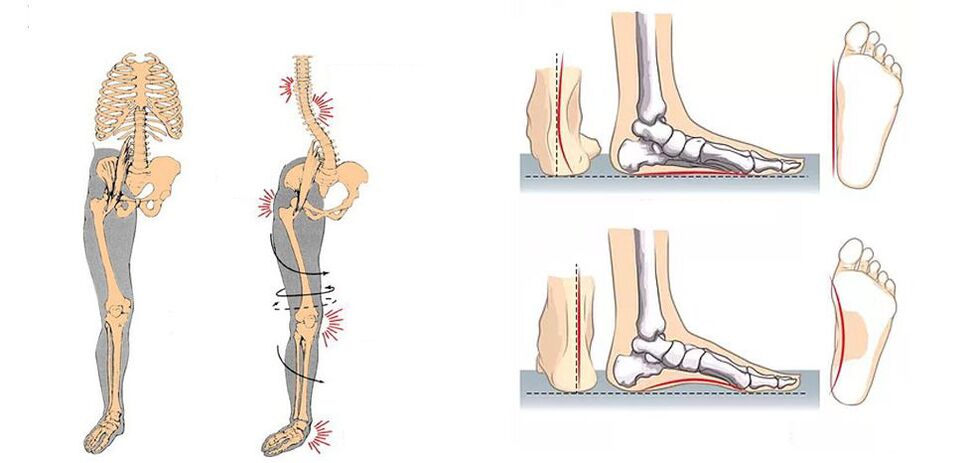
Diagnosis
If you experience pain in the knee area, especially if it occurs regularly or is persistent, you should consult a doctor. If a patient has recently experienced traumatic factors, he or she should consult an orthopedic traumatologist. In other cases, you can initially sign up for a therapist consultation. The doctor will assess the patient's condition, collect a medical history, and prescribe diagnostic procedures. This will allow him to make a preliminary diagnosis and refer the patient to a specialist whose help will be most effective in a particular case.
But you can contact a neurologist immediately if a person notices the presence of low back pain, diffuse pain in the leg, burning on its back surface or other symptoms described above. This will save you time and money as quickly as possible to determine the true cause of the change in well-being and begin treatment. If the patient notices a change in the condition of the legs, in addition to knee pain, bothersome pain in the ankle joints, it is best to schedule an appointment with an orthopedist immediately.
In any case, the doctor will examine the situation in detail, assess the nature of the complaints and refer the patient for an examination, which may include:
- Laboratory tests (UAC, biochemical blood test) are necessary to determine the signs of inflammatory processes in the body;
- X-ray of the knee in two projections (with suspicious pathology of the legs or spine, they are also examined using radiography), which is needed to assess the condition of the bone structures, as well as to determine the indirect signs. Number of diseases;
- CT is used for a more accurate diagnosis of diseases of the joints, as well as for the most reliable assessment of the degree of their destruction;
- Knee joint ultrasound is used to visually assess all structures of the knee, their size, position;
- MRI, which is currently the best method for diagnosing various pathologies of soft tissue structures, including knee joint cartilage and intervertebral discs.
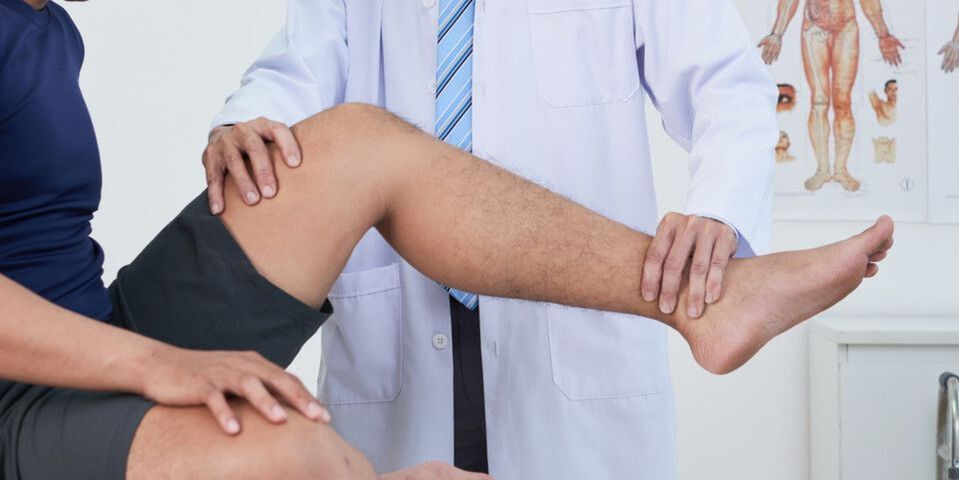
In some cases patients may be prescribed arthroscopy, which is an invasive method for diagnosing and treating knee joint pathologies. As a rule, severe arthrosis and traumatic injuries of the ligaments, menisci, etc. are required. Sh.
Treatment
Since there are many diseases that can manifest as knee pain, there is no single treatment strategy. In each case, it develops individually, based only on the nature of the pathological changes, their severity, the presence of concomitant pathologies, the individual characteristics of the patient, his age, and so on. Sh.
In case of spinal pathologies that caused pain in the knee, treatment is carried out under the supervision of a neurologist. If they were the result of arthrosis of the knee, ankle joints, other pathologies of the feet, treatment is prescribed by an orthopedist.
In addition to consulting a neurologist, patients who are diagnosed with spinal or pelvic bone pathologies may additionally recommend a visit to an endocrinologist to help them deal with the problem of excess weight.
All patients with osteoarthritis of the spine, including osteoarthritis of the knee joints are shown a complex treatment, which may include:
- Drug therapy;
- Physiotherapy;
- Exercise therapy;
- Manual therapy.
Each measure is selected strictly individually, according to the degree of diagnosis and neglect of pathological changes. And in case of 2-3 degree arthrosis of the knee joints, plasmolifting is often additionally prescribed.
Medical therapy
Drug treatment usually includes 2 directions: symptomatic and etiotropic therapy. The first is aimed at rapidly improving patient well-being, eliminating knee pain and other existing symptoms. The aim of the second is to have a direct impact on the cause of the development of the disorders and to normalize the patient's condition in the long run.
Therefore, in most cases, patients are prescribed a complex of medications:
- Nonsteroidal anti-inflammatory drugs are a symptomatic therapy that allows you to quickly stop pain in the knee, lower back, ankles and have an anti-inflammatory effect.
- Corticosteroids are drugs with strong anti-inflammatory effects that are indicated for severe inflammation and are most often injected into the joint cavity. They are used in short courses.
- Chondroprotectors are products that contain components that cartilage tissue uses for regeneration. They are prescribed in long courses, the duration of which is usually at least 2-3 months.
- Muscle relaxants are medications prescribed for spasms of the back and thigh muscles, which are often the body’s reflex response to pain impulses.
- Vitamin complexes are medications prescribed to improve the course of metabolic processes in the body as well as to transmit bioelectric nerve impulses along nerves.
Plasmolifting
Plasmolifting is the injection of plasma obtained from a patient's own blood directly into or around the damaged knee joint. Due to its saturation of blood plasma with platelets, cytokines and growth factors, it promotes:
- Stimulating the flow of natural regeneration processes;
- Restoration of normal composition and volume of synovial fluid;
- Activate blood circulation and nourish the joint cartilage;
- Eliminate inflammation;
- Pain relief;
- Restoration of normal range of motion in the damaged joint;
- Reduce treatment time by 2-3 times.
PRP-therapy, also called plasmolifting, perfectly complements the treatment of osteoarthritis of the knee joint, so it is often included in the treatment regimen for this disease. It can also be used to treat osteochondrosis and injuries of the spine, in addition to medication therapy, physiotherapy, exercise therapy and other treatments.
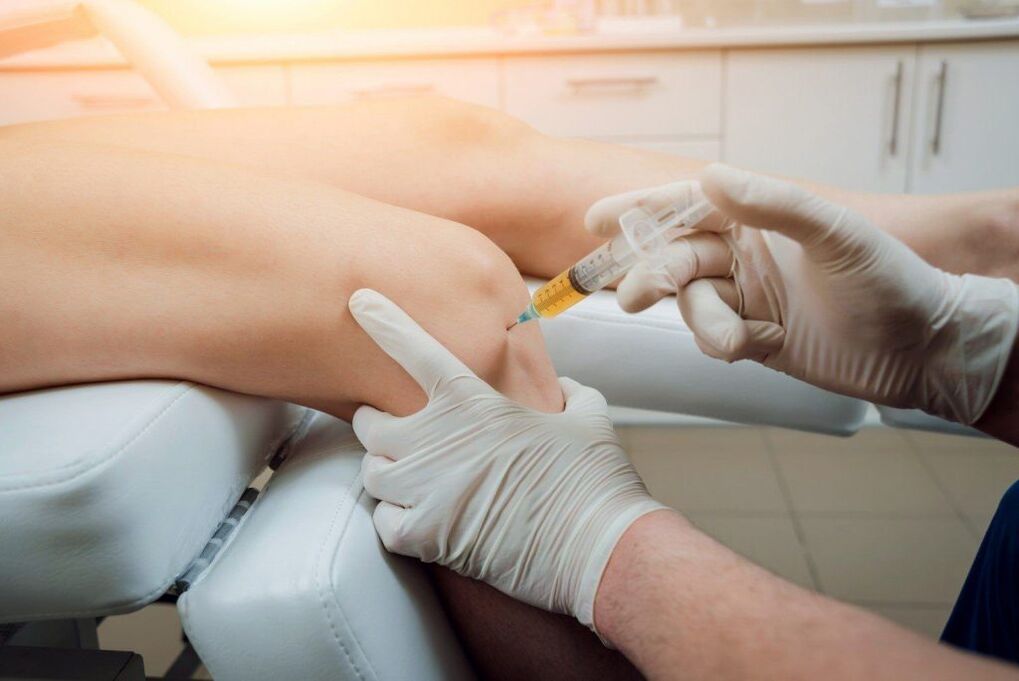
Physiotherapy
A variety of physiotherapeutic procedures can be used to treat diseases of the musculoskeletal system that cause knee pain. They increase the effectiveness of other treatments and have a positive effect on the injured side. Physiotherapy is always prescribed in 7-15 procedure courses that are individually selected. Most often they seek help:
- Magnetotherapy;
- Ultrasound therapy;
- UHF;
- Phonophoresis;
- Electrophoresis;
- SMT therapy or amplipulse therapy;
- Vibrating massage.
Exercise therapy
Physiotherapeutic exercises play an important role in the treatment of joints of any localization and especially spinal pathologies. This allows you to increase the range of motion in a dosed way, as well as activate blood circulation, which leads to the activation of nutrition of all structural elements of the knee joints and thus promotes their regeneration.
But it is important to choose the optimal set of exercises that will be most useful in this situation and will not cause harm. Patients may be advised to do stretching exercises that are especially important for spinal pathologies. Also, exercises are almost always prescribed to strengthen the muscular system. They promote the formation of a strong muscular framework, which will reduce the load on the affected joints and create favorable conditions for their recovery.
Physical therapy lessons are simple and accessible for people of any age because an individually designed program provides a dosed load that positively affects diseased joints and eliminates exercises that may be harmful. But in order to master as accurately as possible each of the proposed exercise methodologies, it is worth conducting the first classes under the supervision of an exercise therapy instructor.
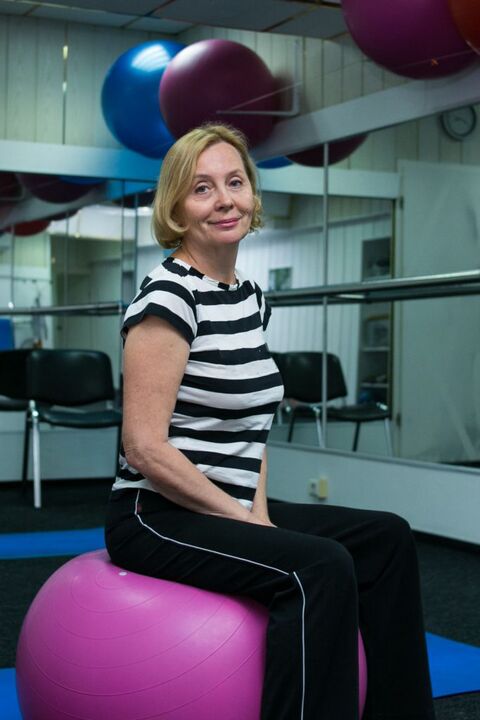
In the future, you can exercise at home, in nature or in any other suitable place, but on a daily basis. Systematization is one of the key to success in physiotherapy. Therefore, it should be added to your daily activities and given the proper time - 20-30 minutes is usually enough. During lessons it is important to avoid sudden movements and acceleration as this can cause pain and worsen the condition.
Manual therapy
Manual therapy plays one of the main roles in the correction of pelvic asymmetry and in the treatment of diseases of the spine. It involves an in-depth study of the muscles of the spine, yoga and spine, pelvic region by a specialist. There are numerous methods and techniques of manually influencing. They are selected according to the type and severity of the existing pathology.
Thanks to the course of manual therapy sessions it is possible to:
- Eliminate back pain by relieving pressure on nerve fibers;
- Improving nutrition of all structures of the spine due to the activation of blood circulation;
- Increase spinal mobility;
- Improving posture by eliminating spinal deformities;
- Restores the normal condition of the pelvic bones and internal organs, which has a positive effect on their functioning.
But the most important effect of manual therapy for patients who consult a doctor with knee pain is to eliminate the compression of the sciatic nerve and make it form fibers. This leads to progressive improvement of the condition and elimination of the pain syndrome, as well as other neurological disorders.
Patients notice the first positive changes after the first session. Further procedures promote its growth and stabilization for a long time. The first procedures can be performed only after the removal of acute inflammation with the help of drug therapy, physiotherapy and other methods of treatment.
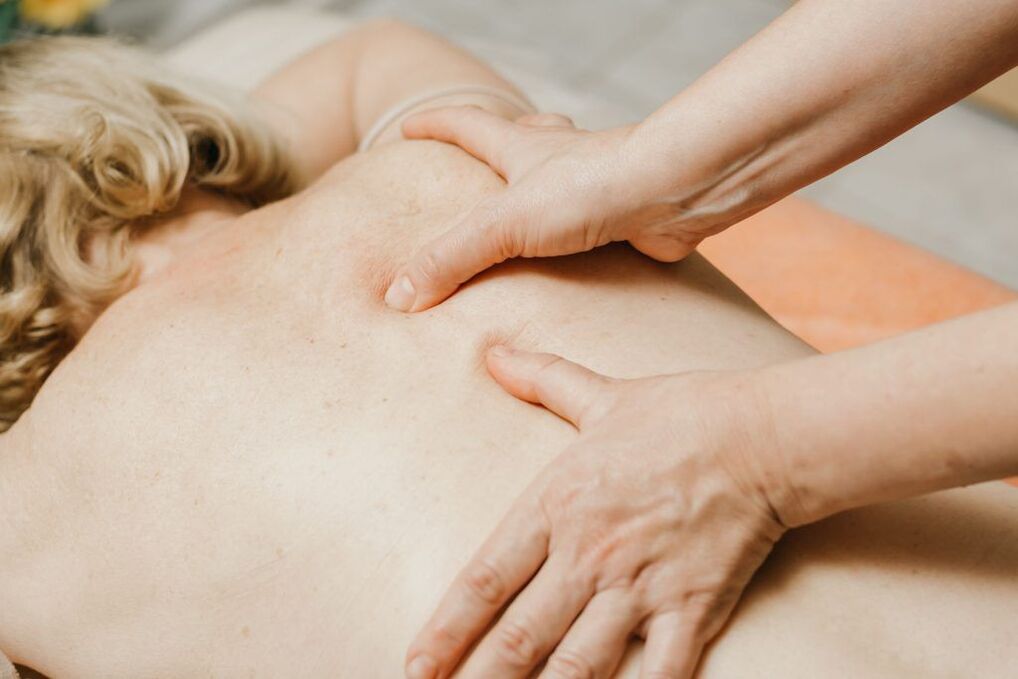
Thus, knee pain may indicate not only its defeat, but also problems in other parts of the musculoskeletal system, particularly the spine and ankles. In any case, they can not be ignored, because the existing pathologies, in the absence of competent treatment, progress over time. This will lead to an increase in the severity of the pain, the appearance of other unpleasant symptoms and, in general, a decrease in the quality of human life. Therefore, if discomfort appears in one or both knees, you should consult a doctor: orthopedist or neurologist. Timely treatment at an early stage of the development of pathological changes will allow you to change them and fully restore the normal functioning of the joint, ensuring freedom of movement for many years.































